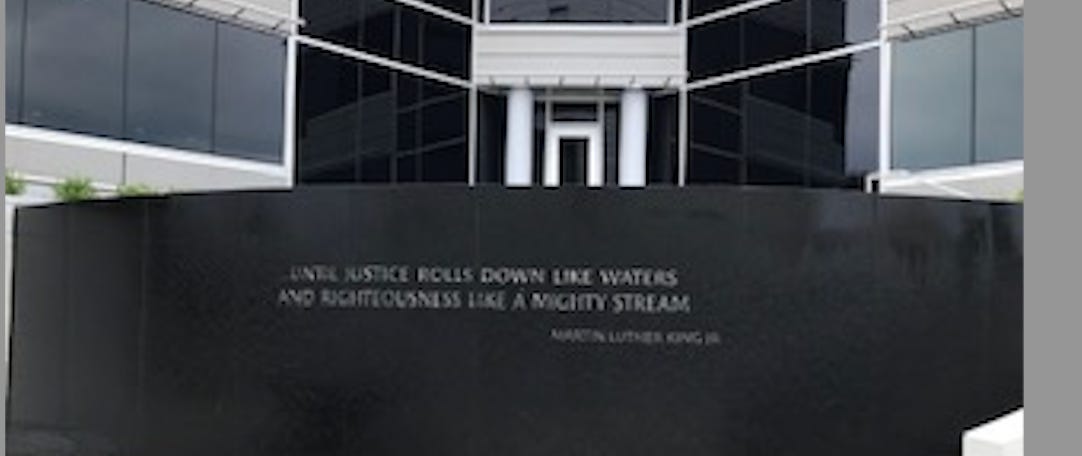I was surprised at how small the Center was and noted there was no parking anywhere but on the street. It was in a business district surrounded closely by banks, state office buildings, and the Dexter Street Legacy Museum which was closed. I was the first and only person in at 9 and when I gave the guard my QR code, her eyes bugged out. I thought what the heck is that about. Did they give that code to a terrorist or something?
She said, “Are you Jane Elliott?”
I laughed, “No, but I do look a little like her.”
“You sound like her too!” I do. But alas, the guard had not met someone famous!
The interactive displays showed the horrors of slavery but were much stronger in the message that the horrors have continued up to this day. As slavery has transformed into mass incarceration, police shootings, and the state taking Black children from their parents, the movement has transformed into Black Lives Matter and #metoo as this generation is just as angry as the earlier generations about injustice. The facts about Trayvon Martin, George Floyd, Breonna Tayler, Tamir Rice and so many others were highlighted. The connections to discrimination against the LGBT community, differently abled people, and migrants were made.
Whatever your specific interest, you could touch a wall display and find out more information about environmental justice or health care or the school to prison pipeline. One exhibit reminded us to vote because it matters so much that someone will kill you to prevent it.
A half hour video claimed that in this iteration of the movement, women were stepping up. I would beg to differ. Women were the backbone of the movement in the 1960s too – Ella Baker trained the organizers, Rosa Parks sat down, Ida B. Wells investigated lynching, Fannie Lou Hamer forced the Democratic party to a reckoning, Mary McLeod Bethune founded a college, Dorothy Height started the National Council of Negro Women, Daisy Bates organized the integration of Little Rock Central High and many more. They just were not recognized and did not receive their due.
In the last display, you could choose to hear a poem. I chose Kwame Alexander who, among other things, said: Violence is a cycle but so is peace. Blacks have done more than their share of the work toward peace. It’s up to us whites to make it happen. On the street corner outside the museum, the names and faces of civil rights heroes grace the light poles. But like not hearing a train whistle when you live near the tracks, the whites don’t hear or see what they don’t want to.





Informative. Great writing.